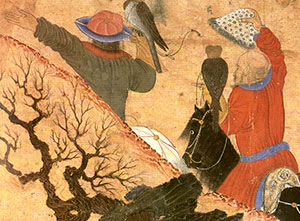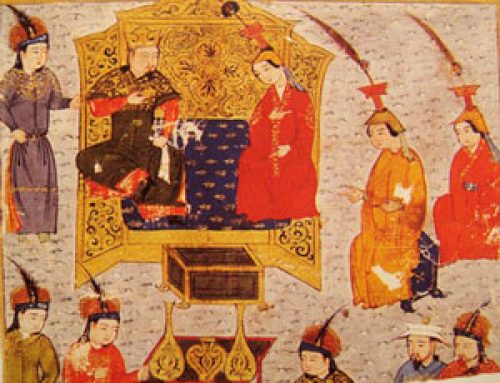
Turkmenistan painting in a Chinese-Islamic style
The collapse of the Mongol Empire in the end of the Middle Ages meant that artists scattered to the courts of many smaller states that were competing for power all over Central Asia. Among the Uzbeks, in Bukhara, artists worked in the same tradition as in the Safavid and Mughal empires further south, painting detailed miniatures showing scenes from Islamic and Persian stories, and from daily life at court.

Losenkov painting of Vladimir and Rognedal (Russia, 1700s)
Further west in Russia, artists looked more towards Europe. By the 1600s, they had stopped painting icons and paintings were done in the French or German style. But these paintings, too, had a Central Asian look, with exotic fabrics and strong outlines.
With the Russian and Chinese revolutions at the beginning of the 1900s, Central Asian art turned to Communist ideals, producing paintings of workers, factories, and farms instead of portraits and horses. Communist leaders disdained abstract art, so artists worked with figures instead.
Bibliography and further reading about Central Asian art:




